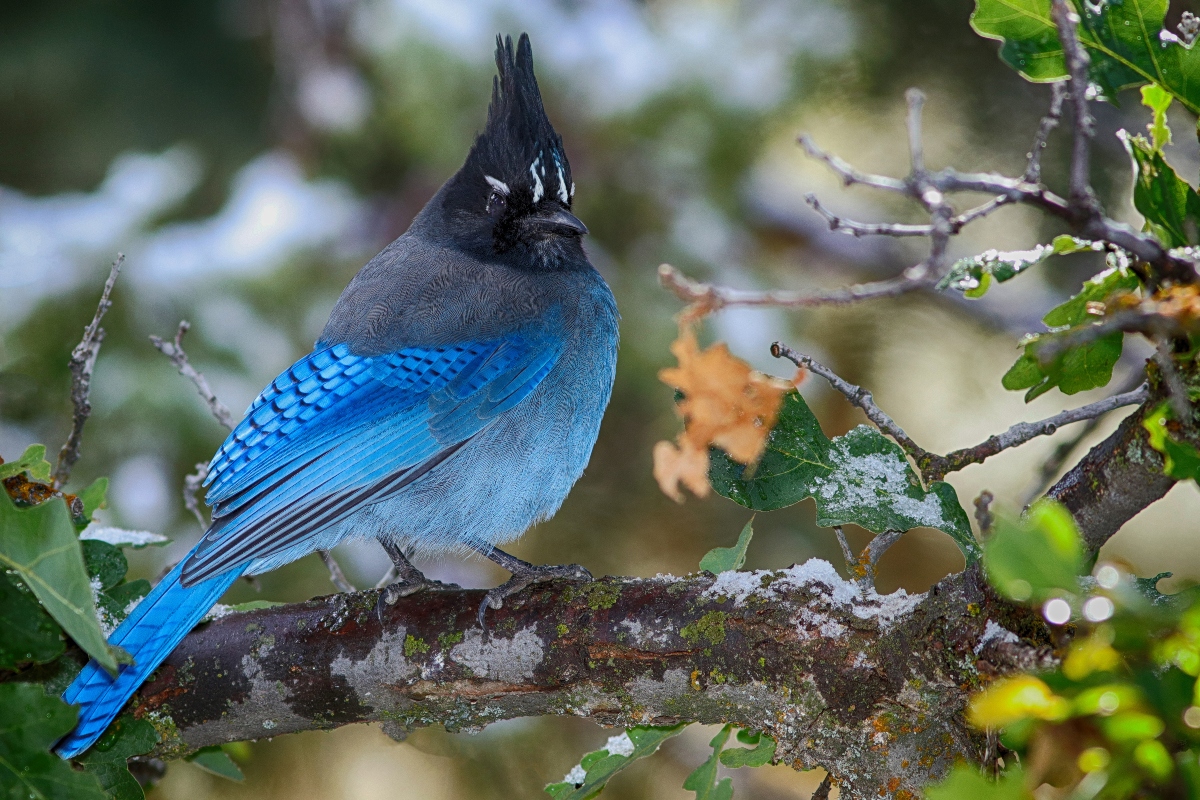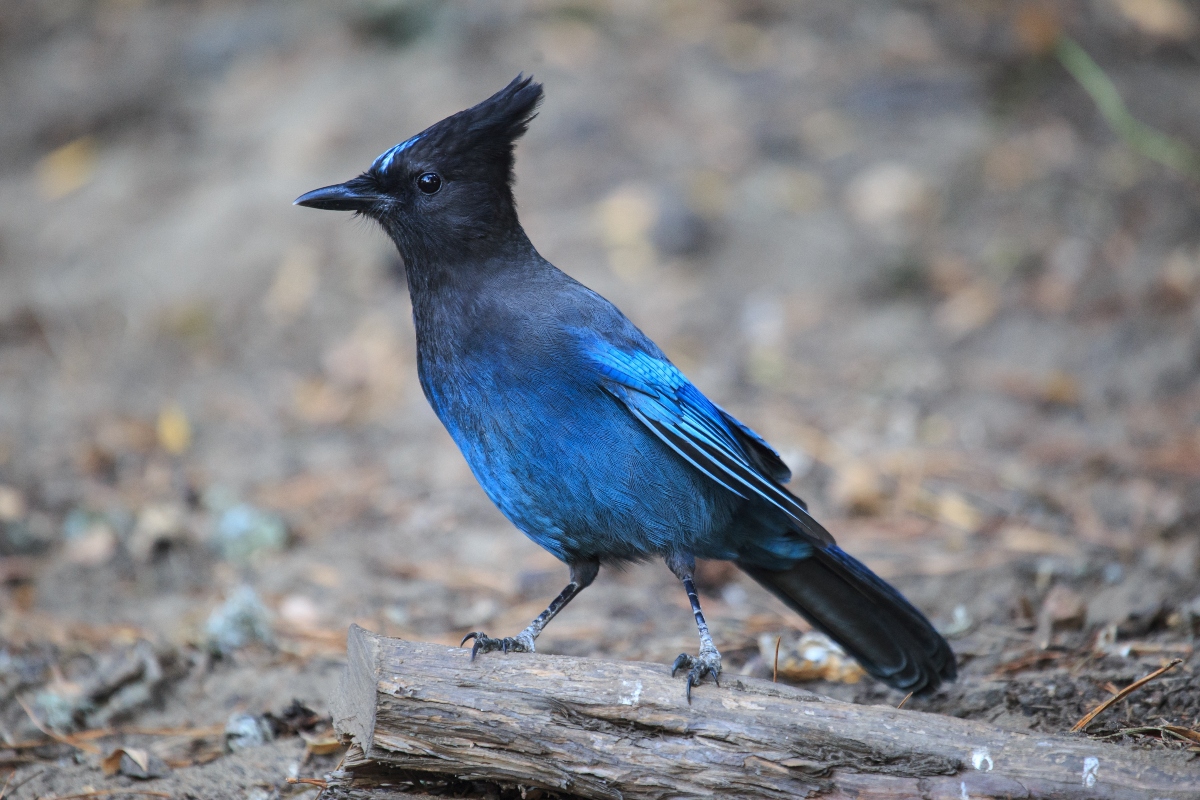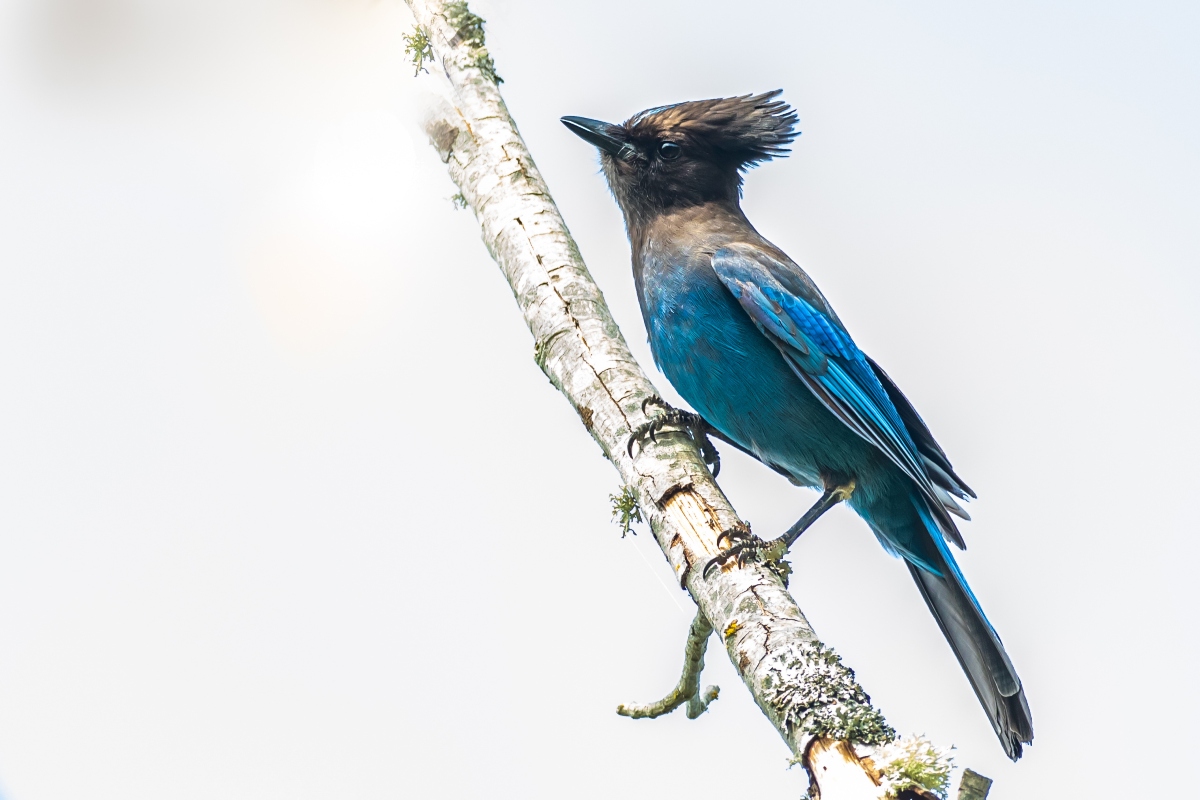The Steller’s Jay, scientifically christened as Cyanocitta stelleri, is a charismatic bird that holds the title of being the only crested jay west of the Rockies. Sporting a flamboyant combination of deep blue and black plumage, the Steller’s Jay brings a dash of vibrant color to the often green and brown backdrop of its mountainous and forested habitats.

Size-wise, these birds typically stretch to a length of about 30-34 cm (11.5-13 inches). One of the most distinguishable features of the Steller’s Jay is its bold black crest, which can rise or fall depending on the bird’s mood or disposition. The deep blue plumage, often with varying shades and patterns, shimmers and catches the eye, especially when illuminated by sunlight.
Native to western North America, from Alaska to Nicaragua, the Steller’s Jay thrives in coniferous forests, often at altitudes of several thousand feet. However, they are adaptable and can also be found in the oak woodlands and suburban areas, showcasing their versatility in habitat selection.

Astonishingly opportunistic in their diet, Steller’s Jays are known to consume a wide range of items—from nuts and seeds to fruits, insects, and even eggs or nestlings of other birds when the opportunity arises. They are also frequent visitors to campsites and picnic areas, unafraid to pilfer unattended food.
What sets the Steller’s Jay apart from many of its avian counterparts is its impressive vocal range. Not only do they possess a wide array of calls and alarms, but they are also skilled mimics. It’s not uncommon to hear them imitating the calls of other birds, animals, and even some mechanical sounds.

Breeding and nesting for the Steller’s Jay usually involve the construction of a robust, cup-shaped nest made of twigs, leaves, and moss, often located high in a conifer. Typically, the female incubates 3 to 5 greenish-blue eggs, and once hatched, both parents participate in feeding the chicks.
Though they are relatively common in their range and not currently threatened, Steller’s Jays, like many other species, are susceptible to habitat loss due to logging and urban expansion. Efforts to maintain their habitat are crucial for their continued success.
For birdwatchers, hikers, and nature enthusiasts, the Steller’s Jay remains a symbol of the wild and rugged beauty of western North America. Their vibrant presence and unmistakable calls are often the highlights of any mountainous expedition, making them a beloved feature of the western landscape.